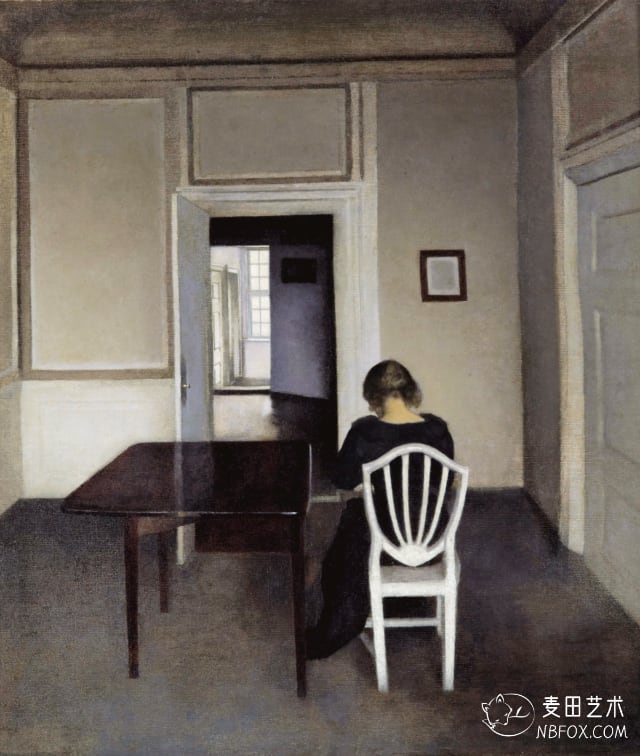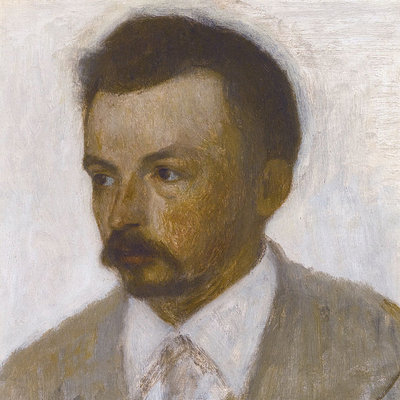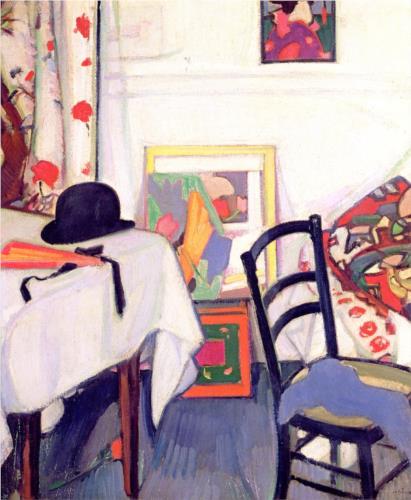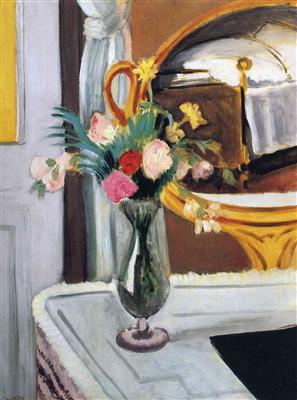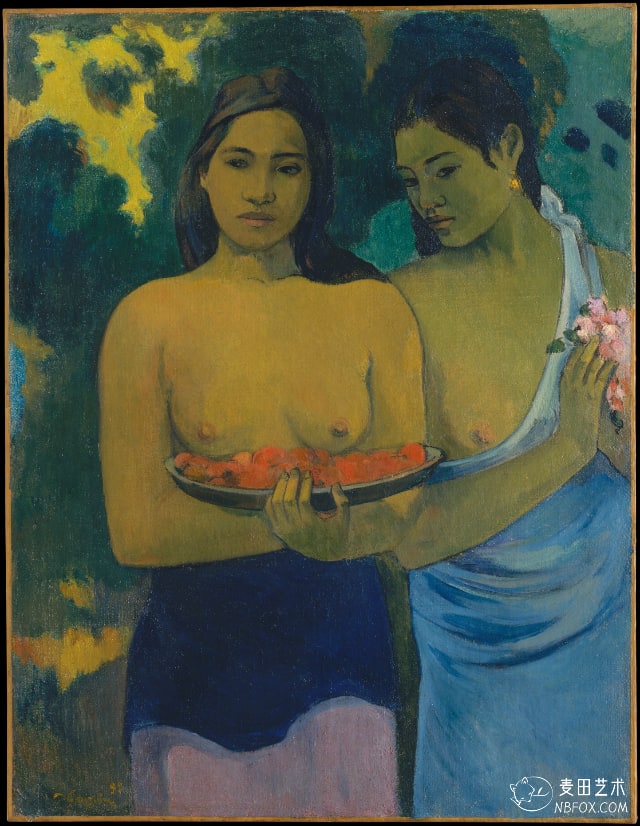图片尺寸:3384 × 4000 像素
作品名称:Interior with Ida in a White Chair
中文名称:坐在白椅子上的艾达的室内
创作者:Vilhelm Hammershoi
创作年代:1900
风格:象征主义
体裁:interior
材质:布面油画
实际尺寸:57 x 49 cm
版权信息: Public Domain(公有领域)
无水印高清图下载
图片尺寸:3384 × 4000 像素
图片大小:5.98 MB
图片格式:JPG
下载方式:百度网盘
下载地址:

作品介绍
机器翻译:
1900年,汉默索伊在他位于哥本哈根Strandgade 30号的家中画了一幅《白椅上的艾达》,这个地址对画家独特的美学发展起到了关键作用。Hammershøi和他的妻子Ida于1898年搬入该公寓,并一直住到1909年。在搬到这个地址之前,他对室内的描写并不比他的肖像画、建筑画和风景画更重要。然而,一旦在Strandgade定居,Hammershøi对独特的、家具稀少的空间、光秃秃的木地板、垂直的墙模、哨兵炉和慷慨的白色油漆门的安排和重新安排,很快成为他作品的中心主题。
这幅作品可以说是在公寓里从这个角度所做的一系列画作中最有诗意的一幅,柔和的色调被白漆椅子上精雕细琢的扇形椅背所点缀和衬托,而伊达的娇小身影就坐在其中。从构图上看,这幅画与八年后的一幅室内画关系最为密切,画中的艾达以同样的姿势坐在一张深色木椅上。然而,从风格上和调色板上看,它更接近1899年的《室内》,从稍稍偏左的角度看,伊达站在一张红木圆桌旁,角落里有一个炉子,两扇门都关着。除了为不同的构图重新安排家具外,哈默索伊似乎还偶尔采取了一些诗意的许可:在角落里经常可以看到的金属炉子在这幅作品中明显没有,似乎是为了强调平静、不乱的气氛。
坐在白椅子上的艾达的室内作品是Hammershøi捕捉永恒和内省孤独感的杰出能力的缩影,他对稀薄的光线与公寓的几何形状和锐角的观察增加了强大的效果。在他的室内风景画中,"光线是主要的主题......而这种光线是丹麦冬季的微弱光线,灰色天气的光线,没有色彩,没有温暖,也没有欢乐,尽管有如此丰富的细微差别......有一种光线倾泻在画布上,定义了这个空间。 ...光线通常是间接的,当然,Hammershøi也知道,间接的光线往往是最美丽的..."(Hanne Finsen和Inge Vibeke Raaschou-Nielsen, Vilhelm Hammershøi, En Retrospektiv udstilling, Copenhagen, 1981, p. 16)。
原文:
Painted in 1900, Interior with Ida in a White Chair was painted by Hammershøi in the rooms of his home in Strandgade 30 in Copenhagen, an address that was to play a critical role in the development of the painter's singular aesthetic. Hammershøi and his wife Ida had moved into the apartment in 1898 and would remain there until 1909. Until moving to the address his depictions of interiors had been no more important than his portraits, architectural paintings and landscapes. Once established in Strandgade, however, Hammershøi's arrangement and rearrangement of the distinctive, sparsely furnished space, bare wooden floorboards, perpendicular wall mouldings, sentinel stoves and generous painted white doors quickly became the central motif of his work.
The present work is arguably the most poetic of the series of paintings made from this viewpoint in the apartment, the soft tonalities punctuated and set into relief by the finely carved fan-shaped back of the white-painted chair in which the delicate figure of Ida sits. Compositionally, the painting relates most closely to an interior painted eight years later, showing Ida seated in the same position but on a dark wooden chair. However, stylistically and in its palette, it comes closer to Interior, of 1899, taken from a viewpiont slightly to the left, in which Ida stands by a round mahogany table, a stove in the corner, and both doors shut. As well as re-arranging the furniture for different compostions, it would appear that Hammershøi occasionally took some poetic licence as well: the metal stove so often visible in the corner is conspicuously absent in the present work, as if to emphasise the calm, uncluttered atmosphere.
Interior with Ida in a White Chair epitomises Hammershøi's remarkable ability to capture a sense of timelessness and introspective solitude, his observation of the rarefied light against the geometric forms and sharp angles of the apartment adding to the powerful effect. In his interior landscapes, 'light is the principal subject...and that light is the meagre Danish winter light, the light of grey weather quite without colour, warmth, or gaiety, albeit so rich in nuance...There is a light that pours in over the canvas and defines the space...The light is usually indirect for, of course, Hammershøi also knows that indirect light is often the most beautiful...' (Hanne Finsen and Inge Vibeke Raaschou-Nielsen, Vilhelm Hammershøi, En Retrospektiv udstilling, Copenhagen, 1981, p. 16).
